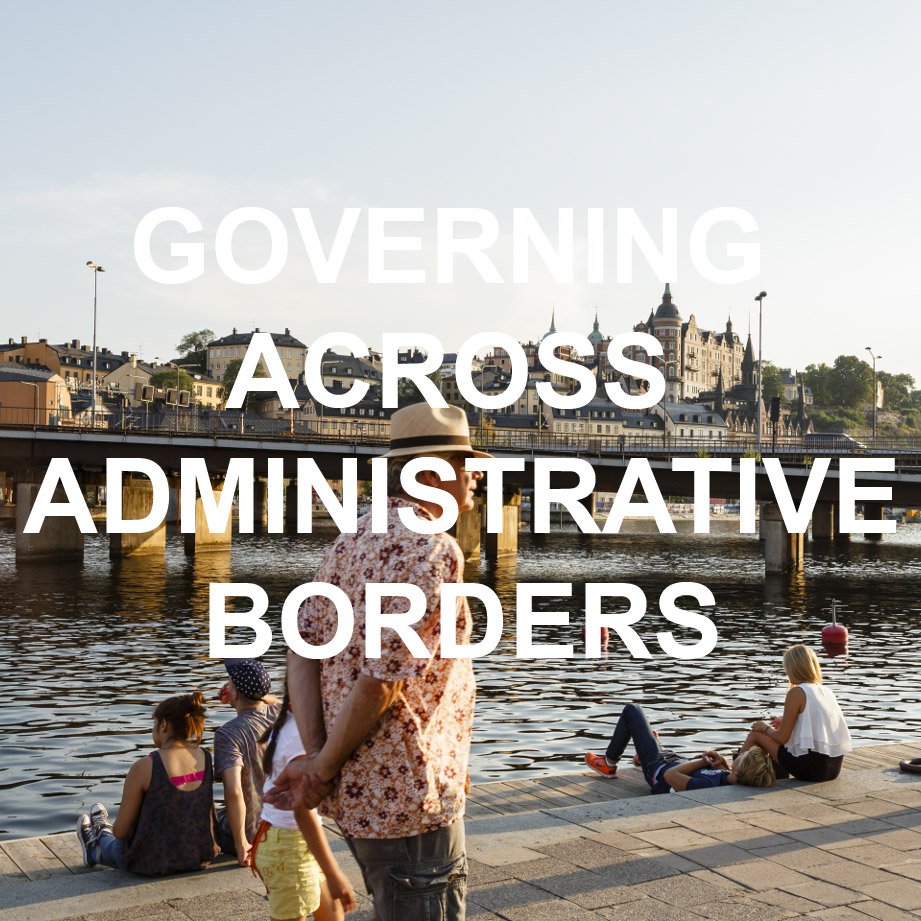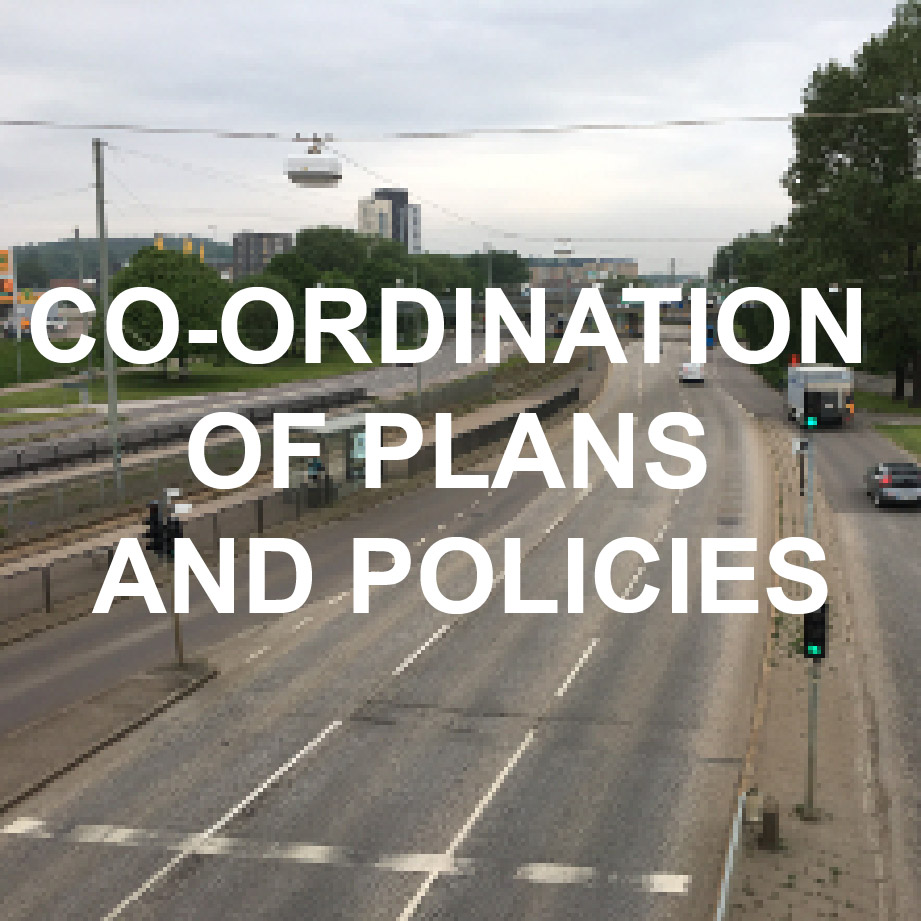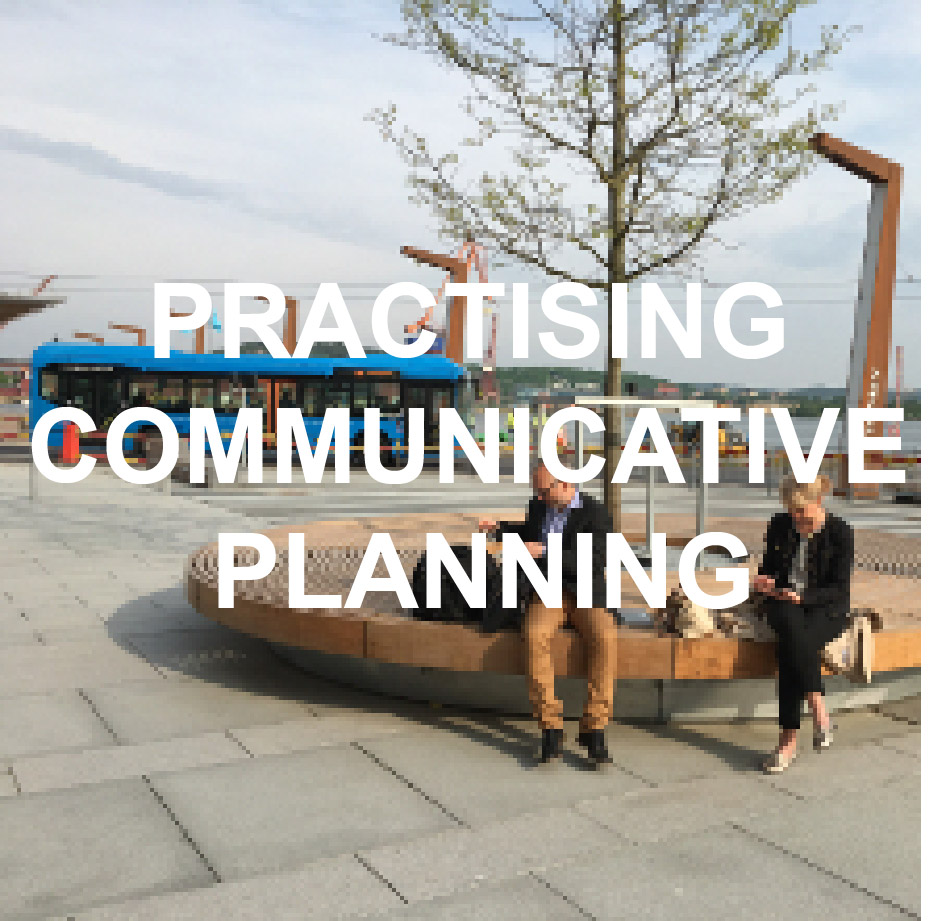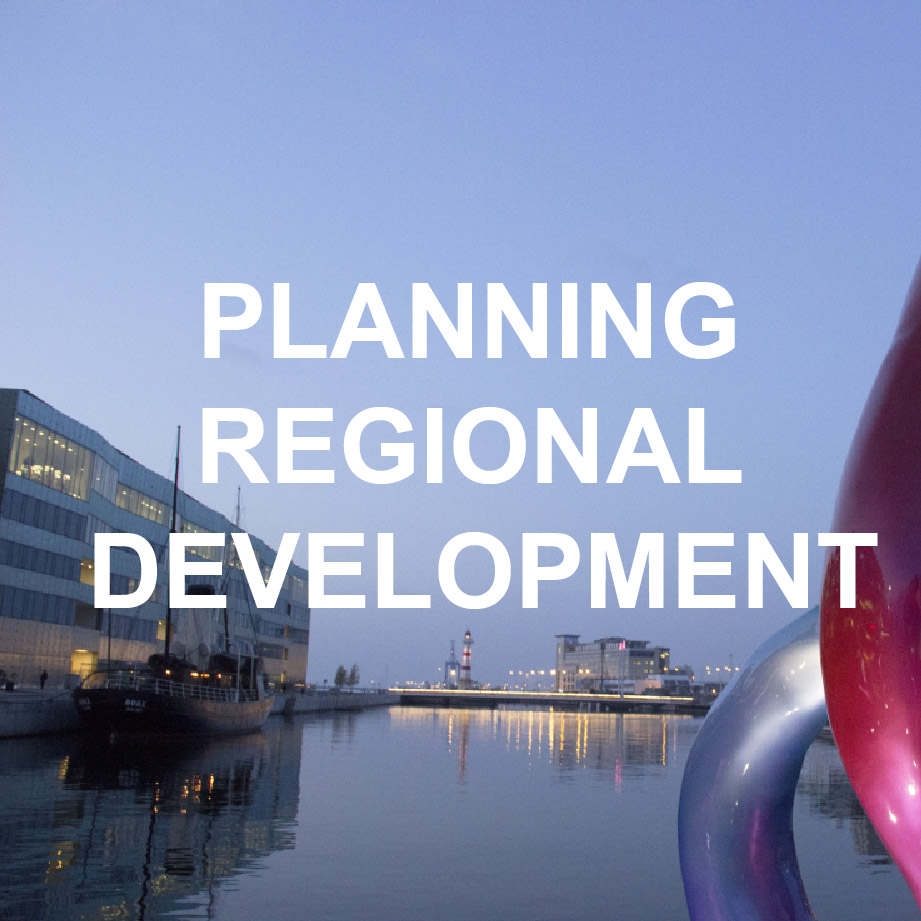



Governing across administrative borders
The importance of city-regions challenges traditional borders but also provides opportunities for new political and administrative collaboration based on functional networks across scales and sectors. The concept of city-regions refers to the increasingly sprawling and interconnected forms of cities, towns and villages through urban infrastructures. The city-region is also an important economic and political entity in the globalized world, connecting the local to the global. Even if functional city-regions are important economical spaces in a globalizing world, it is still important to recognize that territorial boundaries are fundamental to our political system. The competitiveness and sustainability of Nordic city-regions were discussed at an international forum in 2015 (Read more about Nordegio Forum 2015).
Co-ordination of plans and policies
There are numerous spatial plans and policies at different scales in the Nordic region. Because these are interconnected and dependent on external actors and institutions outside the domain of statutory planning, there are key challenges in co-ordination, implementation and governance. In the Nordic city-regions, there is a good availability of plans, analytical tools and policy instruments, and an awareness of the extensive knowledge base related to the previously discussed contemporary urban challenges. A difficulty therefore lies in getting an overview of the existing tools, models and concepts, and finding practical applications for them, rather than inventing new ones. There are, for example, a multitude of so-called integrated urban planning models developed by researchers and consultants, but their use in practice remains, in general, rather low. However, there are exceptions; for example, the Integrated Urban Model used in Region Skåne and Stockholm, the ATP model in Norway, and the Finnish Monitoring System of Spatial Structure.
Practising communicative planning
Communication is another key challenge within city-regions, between public authorities directly or indirectly involved in spatial planning, and with various external stakeholders – from private individuals and NGOs to firms and businesses. During the national meetings in 2014, planners expressed frustration at their perceived inability to reach politicians and residents alike, calling for strategies to change the way that planning is conducted. Not only is there a need to get input from citizens and residents, especially the less vocal groups, and to incorporate this into plans but also there is a need for targeted information to these groups. To ensure evidence based policy-making communication between planners and politicians is also vital.
Planning regional development
A common plan for the development of a city-region is a way to address many contemporary problems. However, collaboration within and between city-regions is challenging ,not least in the political context where regional planning is contested .There is ambivalence about the role of spatial planning in Nordic policy-making. It is increasingly emphasized that planning should facilitate growth and not stand in the way of development, but planning should also contribute to sustainable development. This is partly reflected in continuous reviews and revisions of the planning systems. Spatial planning in the Nordic countries is still primarily performed at the local municipal level and thus complies with the relatively strong and independent role of municipalities. However, hierarchical integration and interaction between different levels of government is a more strained field. In particular, the role and function of the regional level within the spatial planning system is a field of experimentation. Furthermore, there is an inherent tension in Nordic countries between regional (economic) development and urban (spatial) planning.

Main findings from the projects
Nordic cities and regions are often considered as leaders in sustainable urban development, but although social, environmental and economic goals are included in strategic urban policies, it is difficult to implement and co-ordinate these in current planning practices. There are also numerous technical tools such as integrated planning models and indicator systems that might be helpful for policymakers and planners if they are carefully used. Below are some of the main conclusions from four projects that are strongly connected to the planning challenges associated with implementation and governance.
Identifying ‘service gaps’ in city-regions – a tool for analysing accessibility
Planning for mixed functions in the built environment is related to the accessibility of social and private service functions. Nordregio explored and developed a method of spatial analysis, using high-resolution, and mainly open source, spatial data of city-regions, to assess access to public and private services. The method includes four components: (1) the location of residences,( 2) routing information, including streets, walkways, pathways and other established routes for people to move around in the city, (3) the location of services in the categories of culinary, culture and leisure, health, education and commerce, and (4) the location of public transportation stops and associated timetables.
The method was developed in collaboration with local and regional stakeholders, who helped both to define the functional urban regions and to identify their components. It has been tested in four different types of city-region: Funen in Denmark, Stockholm in Sweden, Tampere in Finland, and Trondheim in Norway. The output describes the service distribution and settlement structure of the urban functional areas. When analysing the results, locations were revealed where population density and service accessibility is mismatched, and in this way ‘service gaps’ were identified.
An advantage with such methods of analysis is that they provide visualizations that can frame broader discussion about urban socio-spatial inequalities. A weakness with the method is that differences in the availability, openness and quality of data between countries make comparative analyses challenging. ‘Mismatches’ in urban development structures can be discovered in areas with good service/public transport accessibility but low population density, thus showing places where infills may be appropriate. Equally, ‘service gaps’ are evident in areas with high population density but poor service/public transport access, indicating areas where policy should support better service distribution.
Using contractual arrangements to integrate and implement urban policies
Nordregio reviewed the opportunities for co-ordinating transport, land use and housing through contractual arrangements between state, regional and local authorities. Governing these spatial planning issues through contracts between authorities at different levels has emerged as a key approach to policy implementation in Nordic and other European countries. Both economic and political rationales support these often rather complex organizational and financial arrangements. The review provides a short introduction to these initiatives in Finland, Norway and Sweden with outlooks for France and the UK, and a brief overview of so-called ‘agreement-based urban policies’ or ‘contractual urban polices’.
Formal and informal agreements and contracts between state authorities and municipalities regarding various sectoral policies, such as transport and infrastructure, are not unusual. However, the contractual policies reviewed in this case are aimed at cross-sectoral integrations. They have been established particularly in order to promote sustainability. Furthermore, these urban contractual polices in the Nordic countries are being institutionalized through national regulation and funding. A critical question concerns how these contractual agreements relate to other formal (municipal and regional) spatial planning processes. It should also be noted that so-called ‘contractualism’ often refers, in other countries (such as the UK), to relations between public and private parties, not public-to-public relations as in Finland, Norway and Sweden.
Indicator frameworks hold potential for measuring planning but can also be misleading
Nordregio reviewed a number of indicator frameworks that are used in the Nordic region to assess their utility for measuring progress in planning for sustainable development. Sustainable development indicators normally measure social, economic, environmental and political performance, but few comprehensive plans, in larger Nordic cities, have been developed in conjunction with such frameworks.
A key conclusion is that model-type indicator frameworks are useful for monitoring specific issues but are not well suited to the complexities associated with comprehensive city plans. One concern is that indicator frameworks do not explain the reasons behind a specific performance. While indicator frameworks support monitoring of progress, in order to learn from them, it is important to choose a framework that is suitable for local needs. It is also important that they should be well integrated into other, already existing planning procedures. Follow up systems must not put too much additional pressure on already tight schedules.
The project concluded that there is an advantage in developing indicators at the city-regional scale, because this can leverage support among municipalities and can be used for monitoring progress within the region, which in turn is useful for comparing progress and sharing solutions.
Integrated urban models for collaborative city-regional planning
Integrated urban models (IUM) are tools with great potential, especially in terms of their ability to support comprehensive and participatory decision-making processes with evidence- and scenario-based forecasting. In collaboration with the consultancy firm WSP Analysis and Strategy, Nordregio reviewed the benefits and challenges of IUMs and surveyed the extent of their use in Nordic municipalities and regions. WSP Analysis and Strategy specifically contributed to the project by reviewing the basic technical details of these models (Read more and download reports).
IUMs combine multiple urban attributes to simulate future land-use development scenarios. Attributes that are commonly included in the models are, for example, location and density of residential buildings, public transport networks, cycling networks, green space protection, population growth and cultural heritage sites.
The level of use of IUMs in the Nordic countries is still relatively low, but there appears to be great interest from both municipalities and the research community. IUMs have been applied in a number of larger cities and continue to improve through innovation, development and implementation. As benefits, the models (1) provide practitioners with a better understanding of the urban system, (2) enable virtual experimentation of urban development and associated impacts and (3) provide knowledge and content to stimulate thinking and to facilitate participatory planning processes as well as collaborative decision-making.
